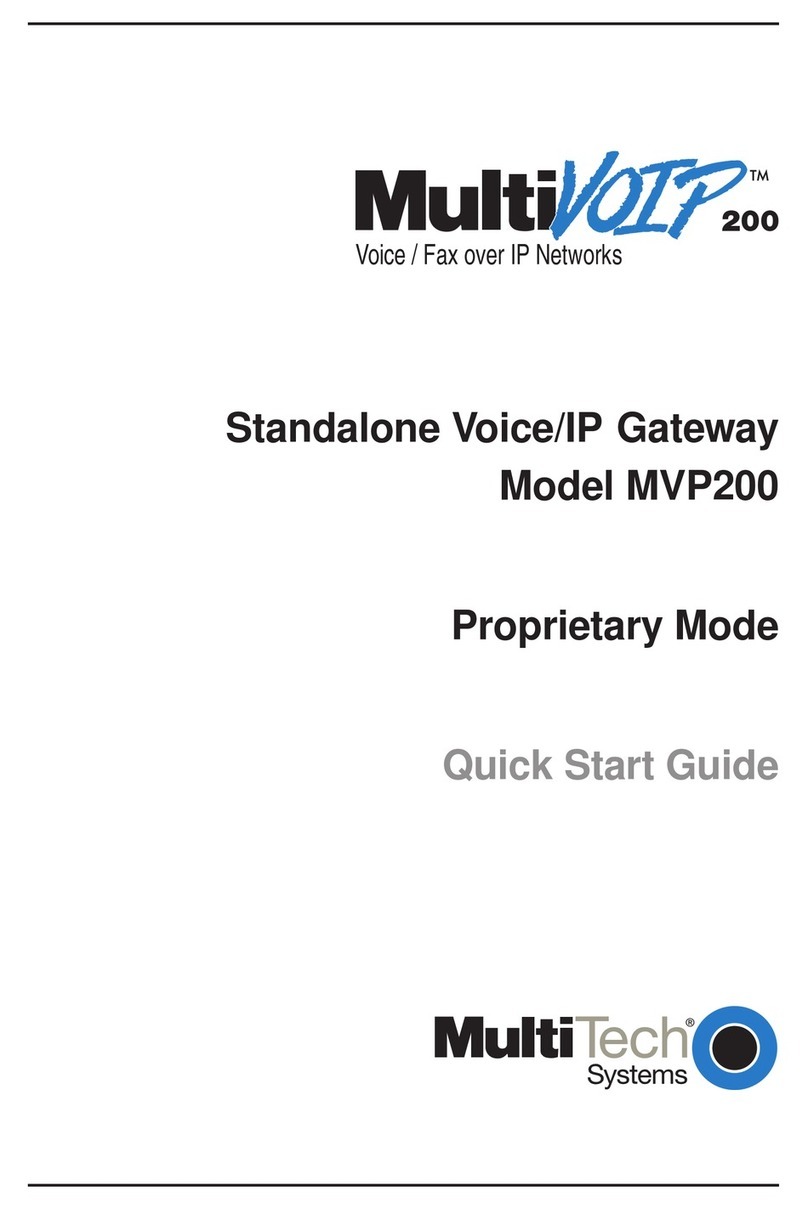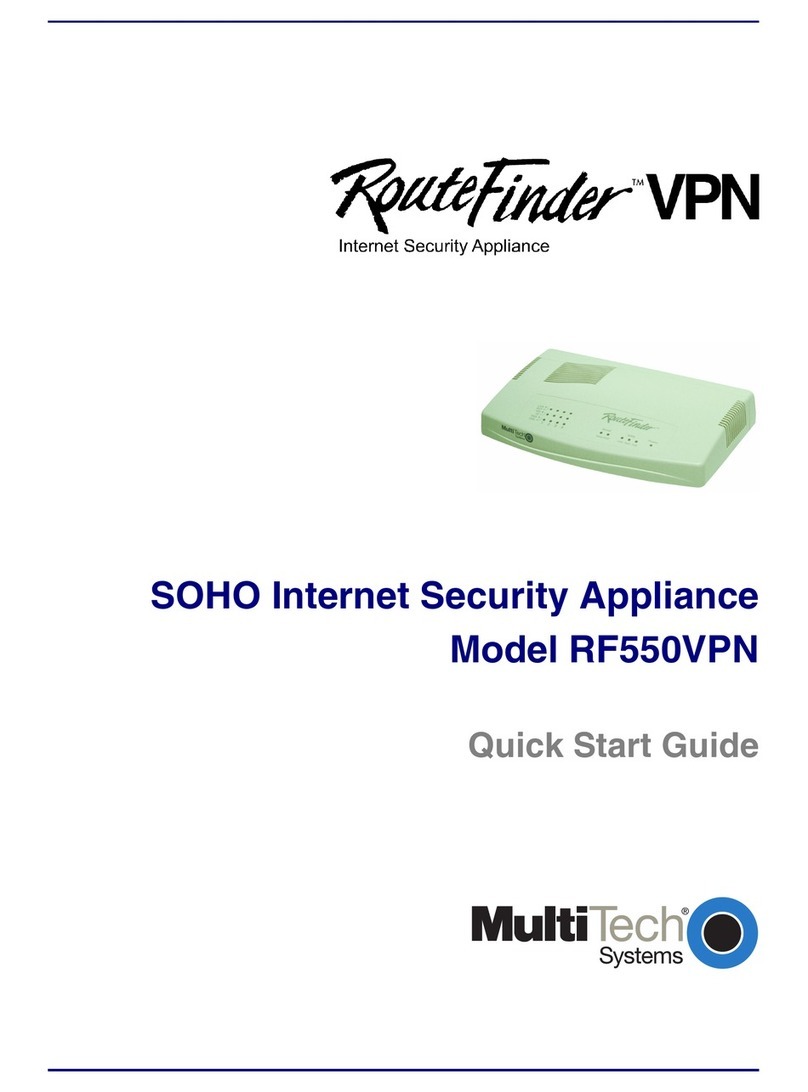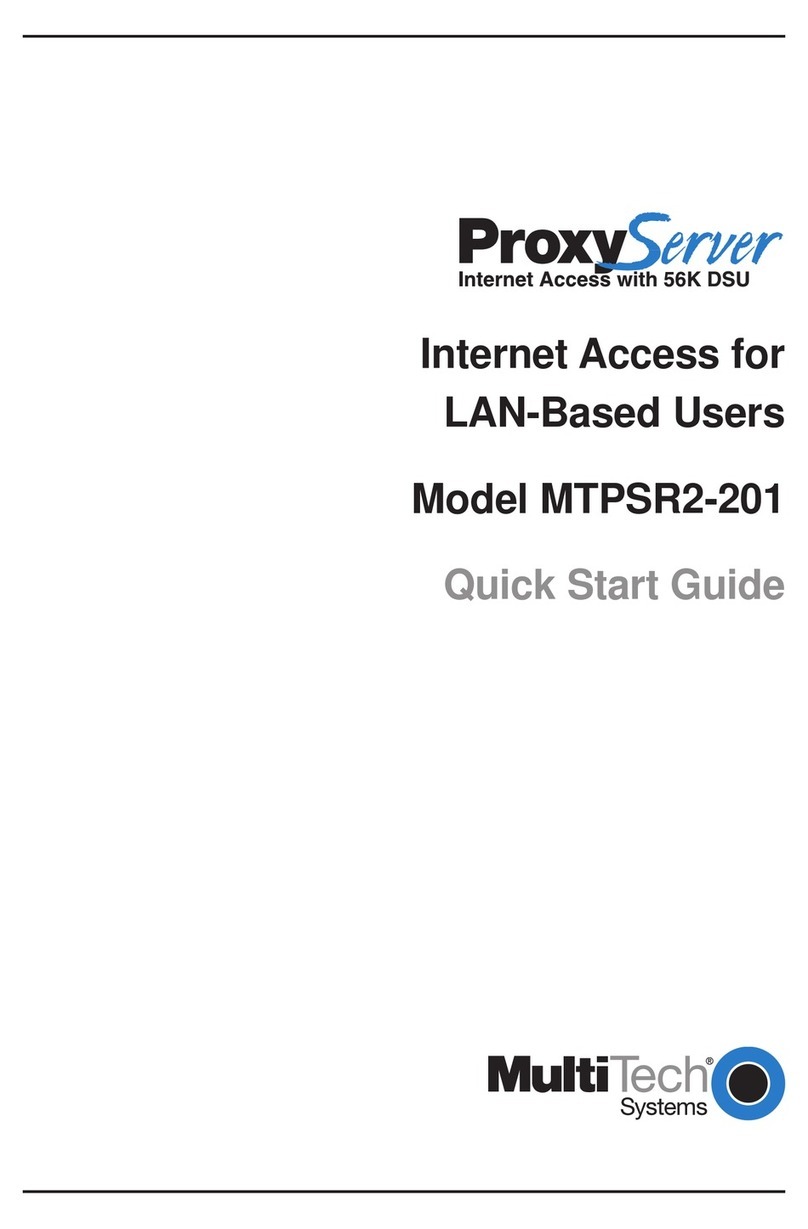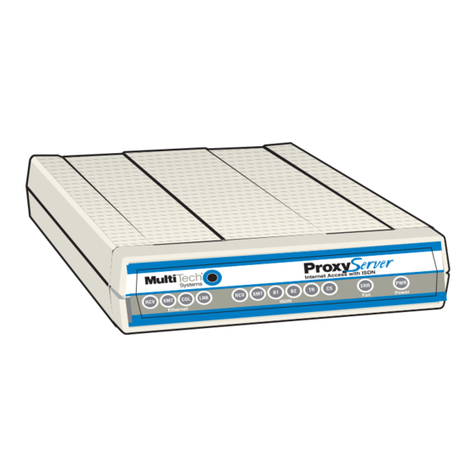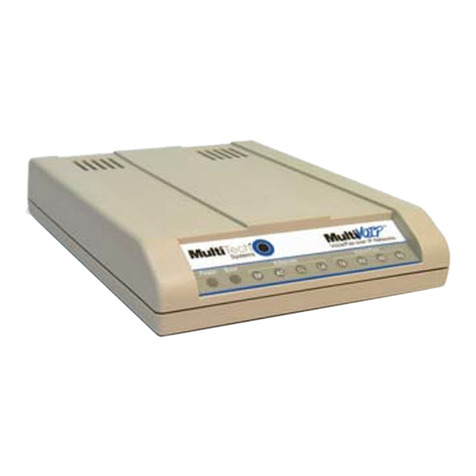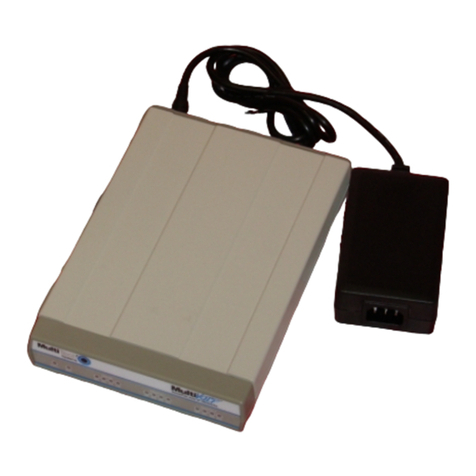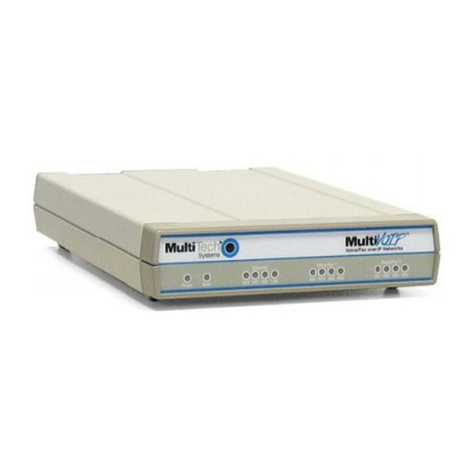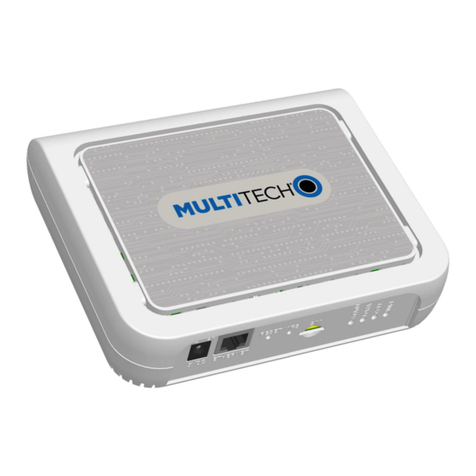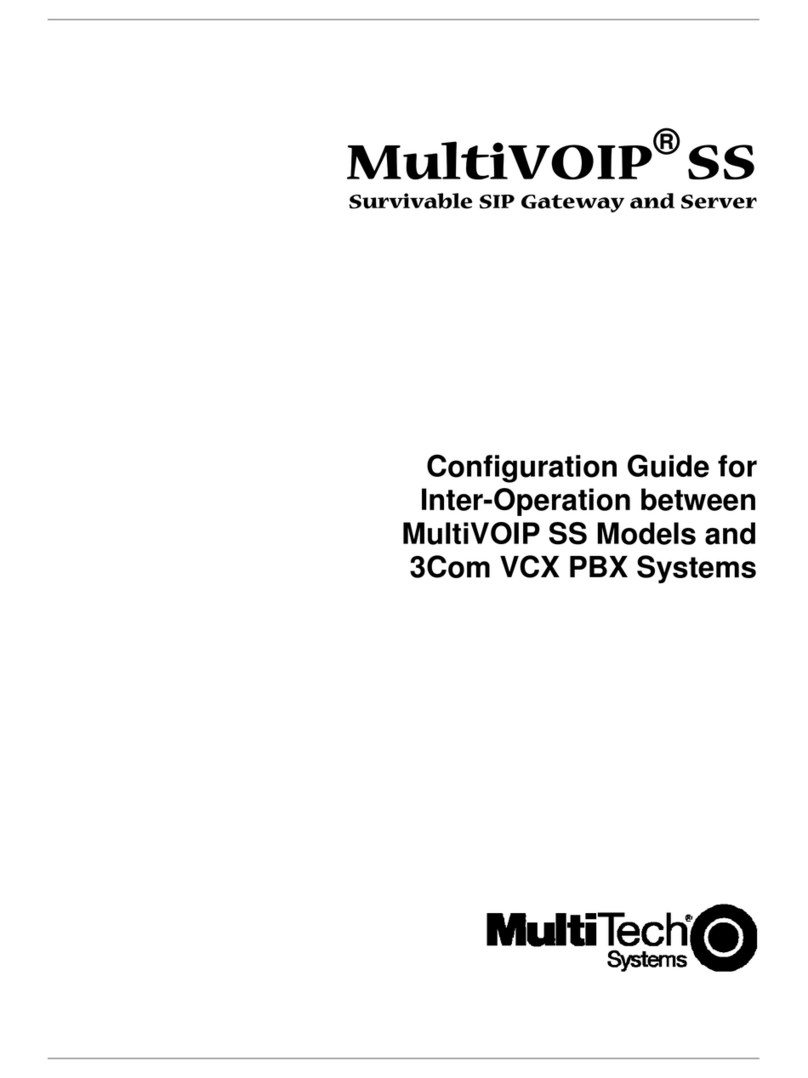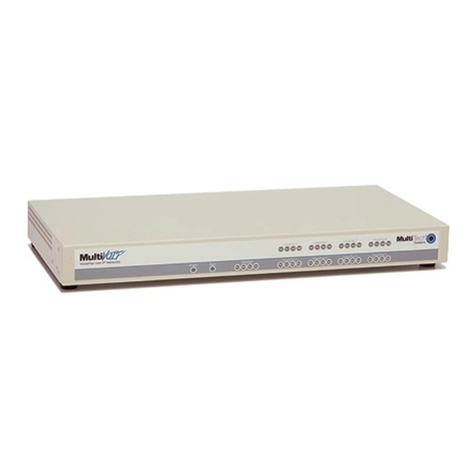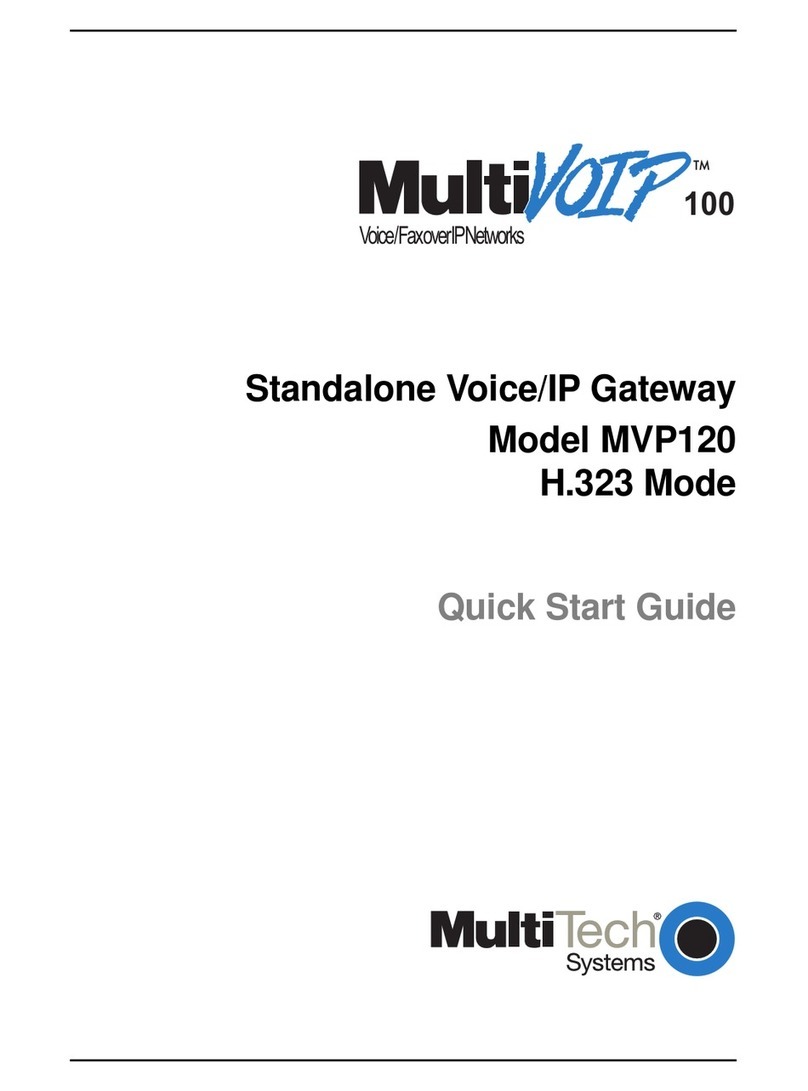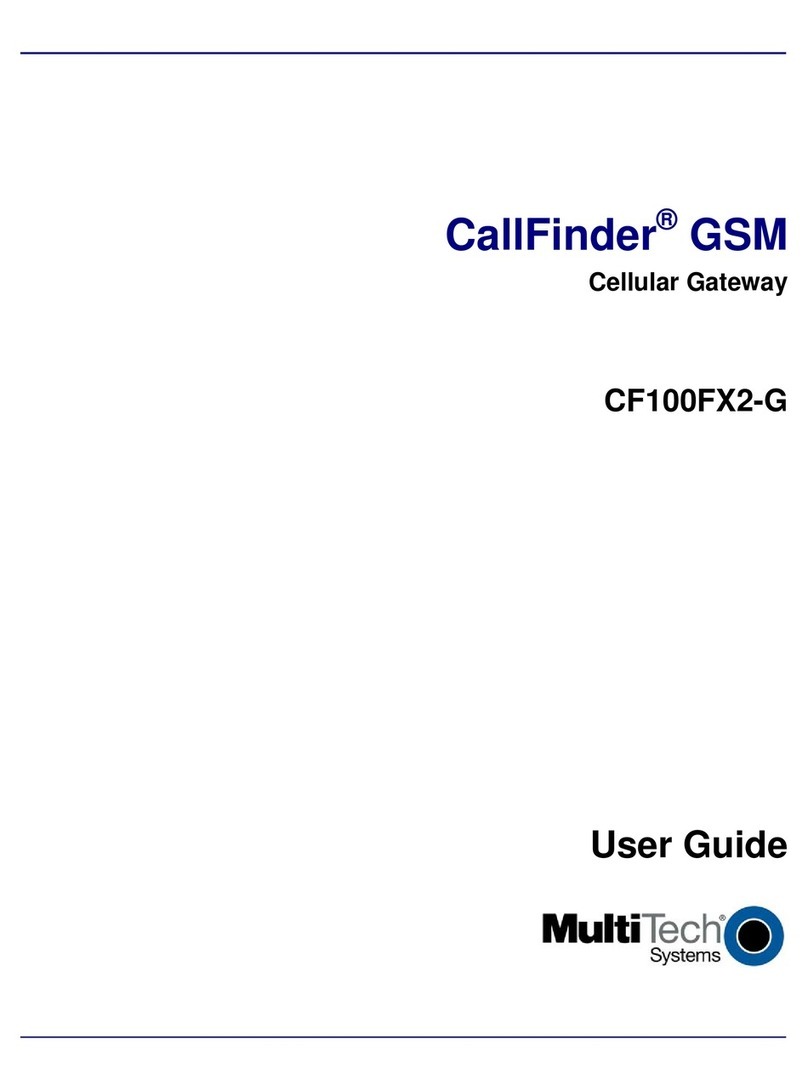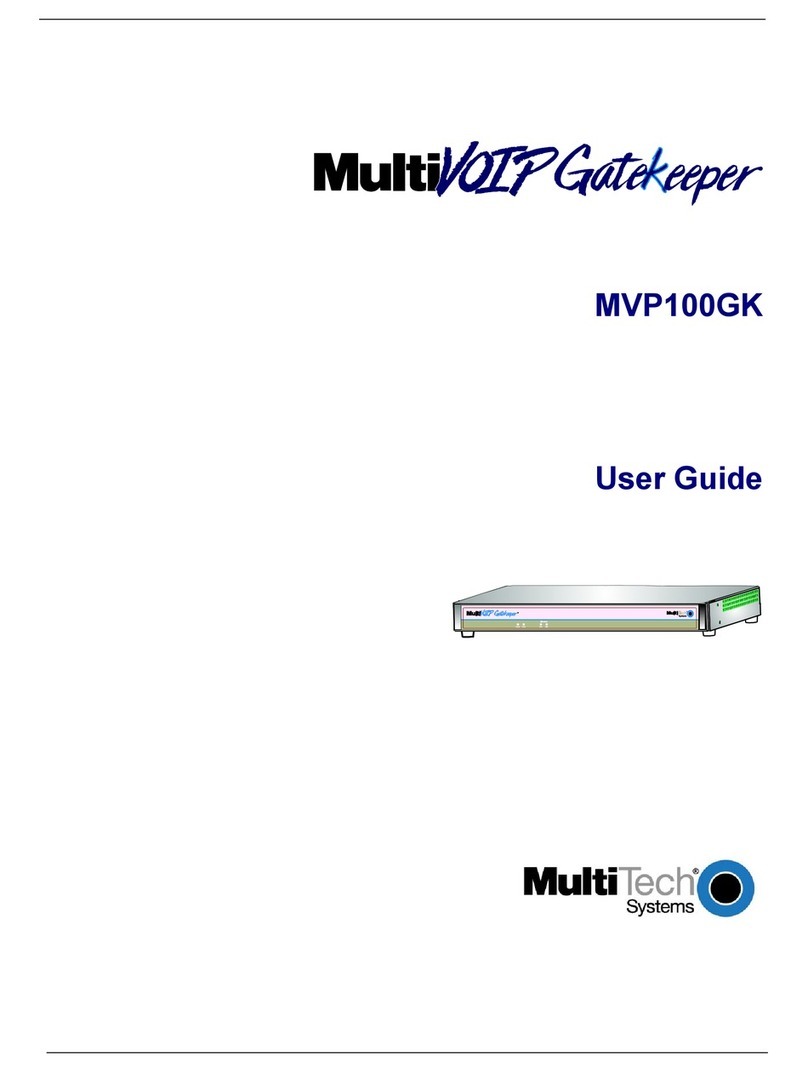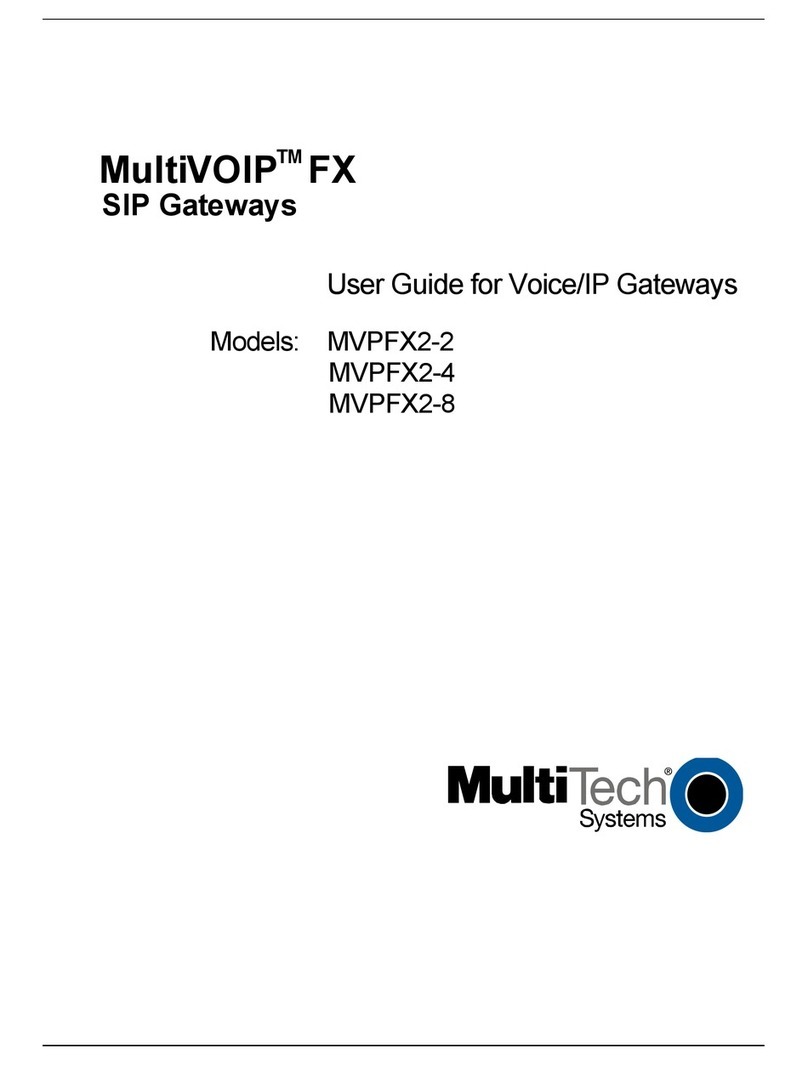
Replace Expensive Tie Lines
A corporation that utilizes Tie lines to connect branch
office PBXs to the corporate PBX can now use the
company’s IP-based Wide Area Network to complete
the call.
Easy Integration
With the MultiVOIP gateway, you avoid the hassle
and expense of replacing your existing routers, WAN
connections or phone system required by other VOIP
solutions. The MultiVOIP gateway simply plugs into
your Ethernet network. Neither your phone service
or network is placed at risk. Minimum requirements:
Ethernet network, WAN connection, IP addresses.
Save Thousands of Dollars Each Month
The MultiVOIP gateway can save your company
substantial amounts in long distance charges. Even
if your company uses one of the most inexpensive
calling plans, a voice over IP network can quickly
return your investment and begin paying you back.
Interoperability
The MultiVOIP gateway utilizes the H.323 and SIP
protocols to provide complete interoperability with
other Internet telephony solutions. The inbound
IP call protocol is automatically detected and the
voice channel is dynamically configured to match.
The outbound IP call protocol is configured with
the phone number allowing you the flexibility to call
H.323 or SIP devices from the same port. In addition,
Multi-Tech has developed it’s own proprietary
Single Port Protocol (SPP) to interoperate with other
MultiVOIP gateways The advantage of using SPP is
that it requires only one static IP address allowing all
other IP addresses to be dynamic. It is also easier to
install behind a firewall as it only requires one open
port. The MultiVOIP gateway also supports T.38 real-
time fax relay for interoperability among other VOIP
equipment
PSTN Fail-over
PSTN fail-over allows the MultiVOIP gateway to
automatically route calls over the PSTN network when
the IP network is congested or completely down.
This feature heightens reliability and augments QoS
when conditions threaten to undermine voice quality.
Utilizing user definable controls, the MultiVOIP
gateway continually checks if the LAN/WAN is
threatened by packet loss or latency, or to see if the
network is completely down. If it detects a problem,
the MultiVOIP gateway switches to “survivability
mode” transparently routing all calls over PSTN lines
connected to the MultiVOIP gateway. The MultiVOIP
gateway continues to monitor the connection and
automatically switches back to the LAN/WAN once
the conditions improve.
Advanced Speech Technologies
The MultiVOIP gateway supports both DiffServ and
802.1p Quality of Service (QoS) protocols which
set priorities for voice and fax traffic and allow for
transparent delivery. The QoS protocols move time-
sensitive voice traffic across even low-bandwidth
WAN connections, like 56K and ISDN, with the
priority and quality required by voice. Other features
such as adaptive echo cancellation, forward error
correction, bad frame interpolation and dynamic jitter
buffers, further enhance voice quality.
Complete Support for Multiple Telephony
Interfaces
For maximum investment protection, the MultiVOIP
gateway two-, four- and eight-port models
accommodate changing communication needs
by providing a programmable FXS/FXO/DID
and an E&M interface for each port. This allows
the MultiVOIP gateway to connect directly to a
phone, fax machine, key phone system or PBX. It
automatically detects whether the incoming call is a
voice or fax call. The single-port MultiVOIP gateway
supports FXS, FXO and DID interfaces.
Bandwidth Management
Bandwidth is used only when someone is speaking.
The silence suppression/Voice Activity Detection
(VAD) feature is an option that frees unused call
bandwidth for data traffic. This is significant, since
callers are usually silent for 60 percent of the call.
When using silence suppression, the MultiVOIP
gateway also offers Comfort Noise Generation (CNG)
at the receiving end so the user knows the line has
not dropped. In addition, the MultiVOIP gateway
supports voice compression standards like G.729
(8:1) and G.723 (10:1). These standards help minimize
the bandwidth required for voice. G.723, for instance,
is the maximum compression rate and requires only
5.3K bps (plus an added 7-8K bps for IP overhead).
Even at maximum compression, your VOIP solution
will still provide toll-quality voice.
Management
The MultiVOIP gateway is easily managed locally
using a windows-based software application or
remotely by the central office with a web browser
or SNMP. Multi-Tech also includes its own SNMP
management software called MultiVOIPManager
which provides central site configuration,
management and call monitoring for all MultiVOIP
gateways on the network. It utilizes a Windows
interface that makes it easy to view events like usage
tracking, live use reporting, call history, and voice
quality statistics. In addition, MultiVOIPManager
eases administration by automatically e-mailing
call logs based on volume or time. The MultiVOIP
gateway four- and eight-port models also include a
modem for remote diagnostics, monitoring, control
and configuration.
